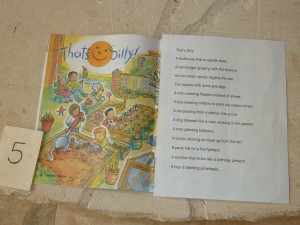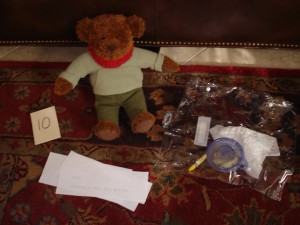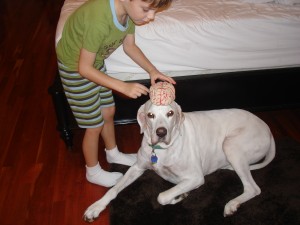My Obstacle Course Activity Idea: How Do They Feel? Sorting Station
This is a station activity I used with Andrew to work on recognizing how other people might be feeling during certain situations. This is a very easy station to make and only takes a short amount of time to write the situations, especially if you think about things and people who are relevant to your child. I used calendar cutouts to write the scenarios on and the mailboxes for sorting but you can use whatever you have available to you (Post-It Notes, index cards, cut up strips of paper, etc.).
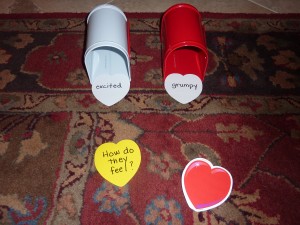
I chose 2 feelings (some examples could be happy, excited, sad, disappointed, etc.) and then wrote short situations that go with those feelings on the cutouts (Jack was going to see his Grandma.  Sally’s DVD player broke.). When he got to this station, we read the feeling cards in front of each mailbox and showed what our faces would look like when feeling that way. You could also add basic smiley face type expressions on the cutouts to help. We received some “Feelings” stamps for Christmas this year that would be perfect for something like this. I’ll share a post on those soon!
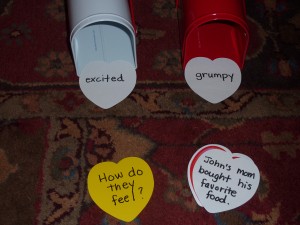
He then chose a cutout, we read the scenario, he decided how that person might feel and placed it into the corresponding mailbox.
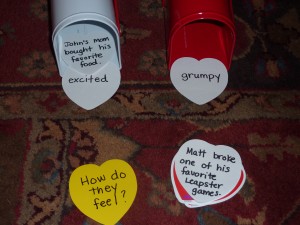
Continue going through the situation cards and talk through how that person might feel and how we would feel if it were us.
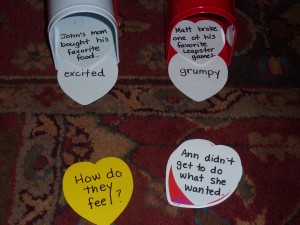
Helping To Make A Connection Between Him and Other People
By doing this, I am trying to have him think about things that are important to him and situations that may have led to him feeling a certain way and showing him that other people feel the same way. For the “Grumpy” cards we discussed what each person could do improve the situation in order to feel better and when talking about the “Excited” cards, I asked him things like, “What would  your favorite food be?” and “What trips do you get excited to go on?”
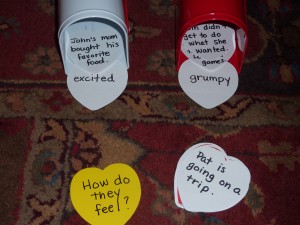
This was a great way for me to see if he was understanding how feelings are connected to situations. It allowed me to work with him on expanding his ability to “read” situations that don’t directly involve him but also recognize that other people have feelings just like him.
Engage, Encourage and Empower!
